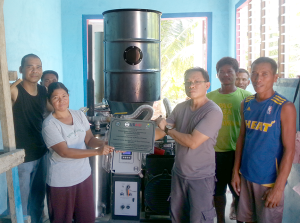In monetary terms, agriculture's share of the economy has long since been outstripped by those of the mining and secondary industries. In 1960, agriculture contributed 11.1 percent of the GDP, down from about 20 percent in the 1930s. By 1999, however, agriculture's share of the GDP had dropped to 5 percent. Despite the farming industry's declining share of the GDP, it remains vital to the economy, development, and stability of the Southern African region. The various sectors of the industry employ approximately 1 million people, or 30 percent of the workforce.
APL recently delivered the first of its PP20s to the Songhai Center in Benin. From the Songhai website: “The Centre Songhai is principally involved in agricultural training, research, and production for sustainable livelihood in Africa. Founded… in 1985, the Center has been managed by Africans since then. The Center’s aim is to create the conditions for improving the lives of Africans, the great majority of whom live in rural areas.”
















